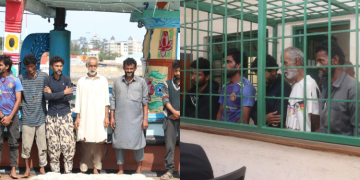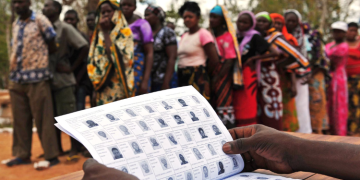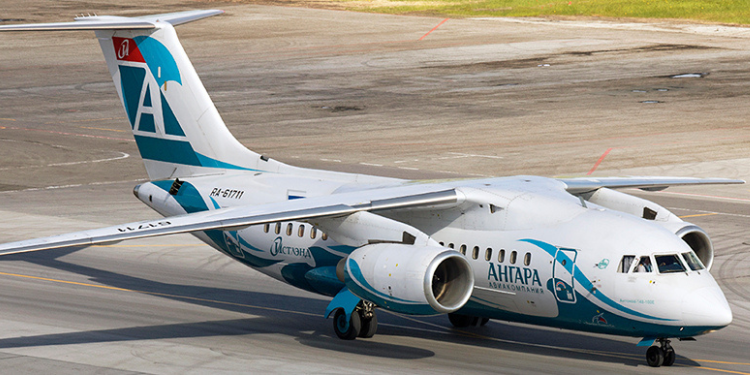A Russian An-24 passenger plane carrying nearly 50 people has gone missing in the Far East region of the country.
The aircraft, operated by Angara Airlines, lost contact with air traffic controllers on Thursday as it was approaching the town of Tynda in the Amur region, near the Chinese border.
According to preliminary reports from regional governor Vasily Orlov, the plane had 43 passengers on board, including five children, along with six crew members.
However, the emergencies ministry has provided a slightly lower estimate, suggesting around 40 people were aboard.
The Russian plane lost contact with air traffic controllers just a few kilometres from its destination while flying the Khabarovsk-Blagoveshchensk-Tynda route.
Also Read: Police Outclassed as Prisoner Vanishes from Court Cells in Broad Daylight
Rescue operations are underway, but no further details on the plane’s status or the passengers have been confirmed.
Missing Aircrafts in Russia
Since 2022, Western sanctions due to the Russia-Ukraine conflict have severely impacted Russian aviation.
The lack of spare parts and maintenance for Western-made aircraft (e.g., Boeing, Airbus) has led to tripling of incidents, with over 180 incidents reported in 2023 alone.
The incidents included engine failures, landing gear issues and depressurization.
Experts warn that uncertified parts from countries like India and Iran, combined with relaxed safety regulations, increase risks.
For instance:
- In January 2023, daily incidents involving landing gear malfunctions were reported, mirroring Iran’s experience under sanctions.
- A Nord Star Boeing 737-800 and other aircraft faced issues like fuel leaks and windshield cracks in 2022–2023.
Aviation experts predict a potential rise in crashes due to these maintenance challenges, with Russia’s aviation safety lagging behind even African standards in recent years.
Post-Soviet era aviation
After the Soviet Union’s dissolution in 1991, the Russian Air Force was established in 1992, and Aeroflot fragmented into smaller carriers.
Financial constraints in the 1990s led to degraded infrastructure, with 40% of military airfields needing repairs by 1998, and pilots flying as little as 10% of the hours of their U.S. counterparts.
Safety incidents involving Russian plane persisted, increased by aging Soviet-era aircraft and, later, Western sanctions.
In 2010, a Polish Air Force Tu-154 carrying 96 Polish officials, including President Lech Kaczynski, crashed near Smolensk, Russia, in foggy conditions.
Russian authorities cited pilot error, but speculation of foul play persists.
A Metrojet Airbus A321 crashed in Sinai, Egypt, killing 224. The Islamic State claimed responsibility, suggesting a bomb, though Russian officials initially denied this.
Also Read: Alarm Raised as Kenya’s Debt Costs Among World’s Highest
In 2016, a Russian Air Force Tu-154 crashed off Sochi, killing all 92 aboard, enroute to Syria.
Key factors contributing to these crashes
Soviet planes, like the Tupolev Tu-104 and An-26, were often cheaply built and poorly maintained, prioritizing mass production over quality.
Five of the 10 aircraft models with the highest fatal accident rates in 2013 were Soviet designs.
In the deadliest crash on Russian soil, in 1984, the Aeroflot Flight 3352 killed 178 when an air traffic controller fell asleep, allowing maintenance vehicles on the runway during landing.
Incidents like the 1981 Aeroflot Flight 811 mid-air collision with a Soviet Tu-16K bomber, killing 37, exposed poor coordination between civilian and military aviation.
Soviet secrecy and cover-ups in Russian military operations have occasionally led to increased Russian plane crashes in the country.
The USSR often suppressed crash details, as seen with Flight 811, which was classified until the 1990s.
The 1983 Korean Air Lines Flight 007 shootdown, killing 269, was misidentified as a spy plane by Soviet forces, escalating Cold War tensions.
Many crashes, like the 1960 Aeroflot Il-14 crash in Komi (23 deaths) or the 1977 Il-14 crash in Sakha (39 deaths), were worsened by poor navigation equipment and inadequate weather forecasting.
Follow our WhatsApp Channel and X Account for real-time news updates.











































































